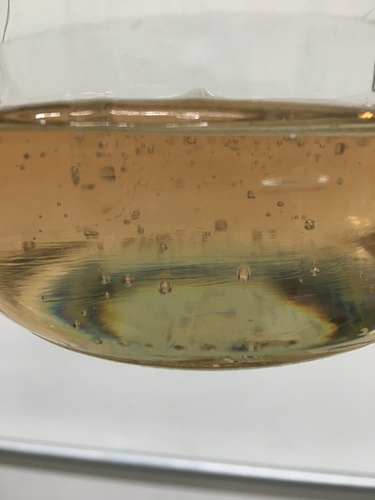T41 makes d10 when used in the boiling flask, which is why you have such high CBC and a bunch of unknowns
I didn’t make this. But it also made 74% D8, and most importantly this is a legal hemp product ![]()
That’s what we’re hoping for. Thanks @Future
And sitting right at about that 11% for unknowns. I am so curious what they are.
Any idea if the final product was a liquid or solid?
The test result above was made from mother liquor according to my friend
Touché.
I use the “simple” GCFID, with no derivatization (all cannabinoids are decarbed). I identify 10 non acid cannabinoinds (those available as standards through sigma or restek).
On a DB35 MS column, using a slow enough temperature gradient, all these guy are well separated. THCv is first, then CBL, then CBC, then d10 (I guess, did not ascertain it so far) very close to CBC, but still different.
In the case of cbd distilate, I have often seen fractions coming with some % of d10 (and no more cbc) or some %of thcv (or something exactly at this position). Sometimes, one compound appear in the terpenes sector. In any case, many unknowns appears sometimes more than 10.
And overall, assuming these are all cannabinoids, and when the product was made from isolate (and the machine well calibrated), the quantification of known cannabinoid is pretty similar to their contribution to the spectral area. Which means that GC FID is likely convenient for quantifying the unkowns, whatever they are. What is missing, is a set of standards to identify them. And off course more research with fancier equipments to ascertain such approach.
I dont think those new compound are that much heat sensitive, given where they usually come from…
Others reasons that can also be added are the cost of equipment, the ease of use, and the robustness. GC beats LC on all these aspects.
@Dr_Jebril - Nice work!
I’m running a MXT-35 in an SRI 8610c without a heated injector, I’d be interested in taking a look at that temp profile you’re using.
Wouldn’t mother liquor be more likely to produce side reactions in comparison to a high potency CBD distillate? It’s still going to have all the shit in it the distillate did, just in even higher concentrations, but much lower CBD content, yes?
Depends on the content of the ML, if it’s just thc and cbd you’ll be able to isomerize both into d8. If theres CBC itll turn into cbl, cbg I’m not sure what would happen
Same, also curious what the unknowns are in any distillate that tests at 90% TAC
Liquid
The test result I posted, is from isolate that was distilled with T41 in the flask, according to the OLCC license I have equity in and recommended this as a jumping off point to, whom provided me with the full COA
Could it be unknown cannabinoids maybe?
I decided to give it a try with distillate.
I’ll take it to the lab tomorrow, and ask for a copy of the chromatograph. Sure wish we had a 24hr lab in Michigan.
Do you know the ratio of t41 to isolate was used?

